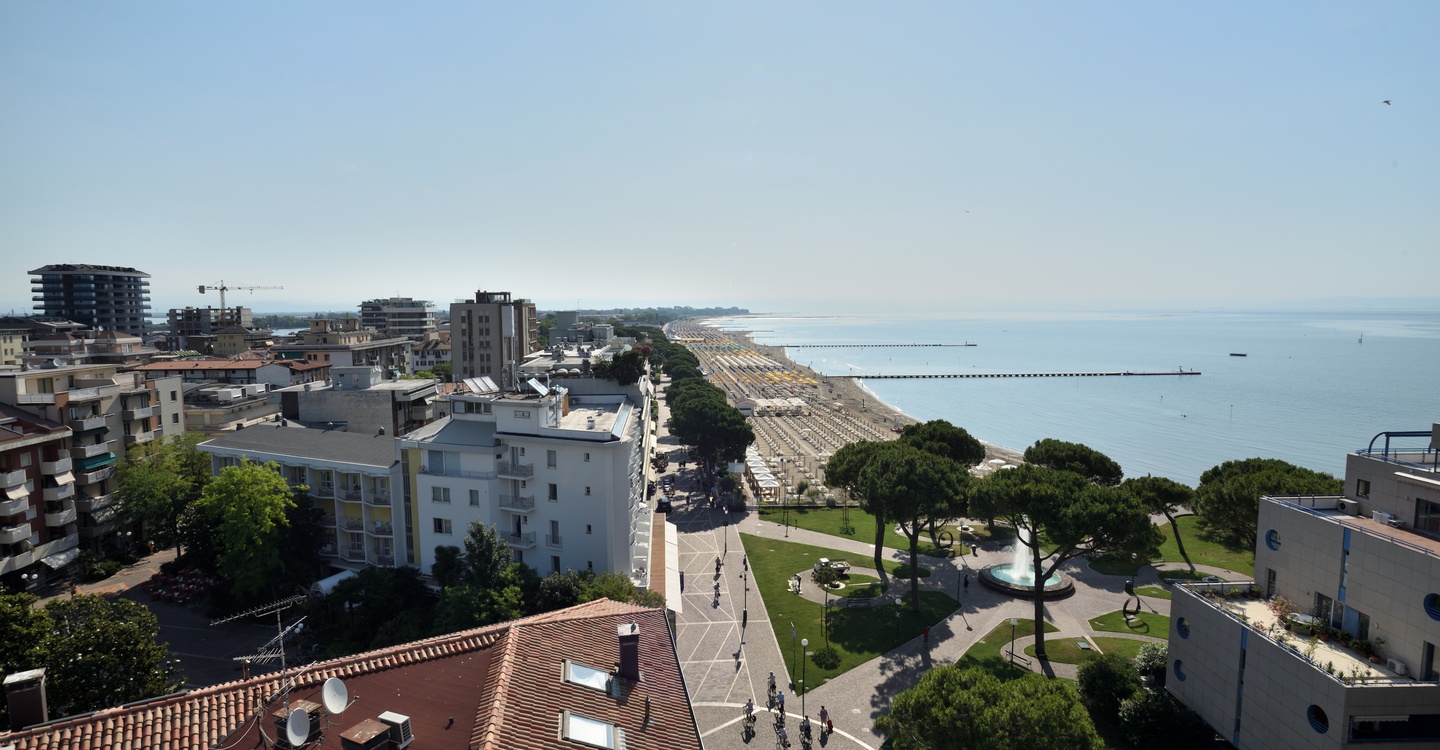Take a walk in the town centre in the area of today’s Via Carducci, Viale Dante and Viale Regina Elena, where you’ll find some striking buildings dating back to the recent Hapsburg era of Grado. As it was close to the capital of the empire and to the city-port of Trieste, by the end of the 19th century the Austro-Hungarian nobility and upper middle class already preferred the island to the tourist resorts of the Upper Adriatic for taking the waters and for bathing. It was declared a health resort in 1892 and villas were rapidly built, some of which changed from originally being holiday homes to becoming prestigious hotels. Other “small villas” no longer exist or have been transformed over the years. However, quite a few buildings were carefully preserved: the most representative of these was No. 7 in Via Carducci, the Villa Liberty, or “Art Nouveau Villa”, a private residence featuring various colours and the harmonious blend of numerous materials, typical of this architectural style. The unusual architectural features of this artistic movement included wood, cast iron, wrought iron, stained glass windows on the façades, portrayals of flowers or female figures with “whisk-like or fluttering dragonfly wing” lines (see Prof. Sergio Tavano) and wood decorations or coloured tiles beneath pitched roofs. This movement established itself under various names in different languages from the late 19th to the early 20th century. It broke away completely from academic tradition and radically renewed the artistic disciplines by becoming involved, for example, in the concept of “Total Art” (Gesamtkunstwerk) of the Vienna Secession Movement. In the buildings in Grado this trend also appears to partly follow the Carinthian lakeside architecture of Lake Wörth (Wörthersee Architektur).
The “Ville Bianchi” complex, lying between the modern pedestrian area and the sea front, was built on the sand in the early 20th century, using materials transported on barges from Belvedere near Aquileia across the lagoon at the request of Leonhard Bianchi. The Baron, together with the Austrian government, subsidised the digging of the artesian well to provide the island with water and thus helped to modernise it. The Marina, Spiaggia, Onda, Stella Maris and Adria Villas showed the Bianchi family to be among the pioneers of the tourist trade in Grado: it remained a family business until 1978. Sold and recently restored with changes in management, the exclusive complex immersed in a green oasis has an unusual detail at the front: on the enclosure bordering the nearby beach, where the so-called "Imperial Gate" stands, the entry of that period, you can still make out Emperor Franz Joseph’s monogram (“FJ”) beneath the double-headed eagle!
Today’s “Villa Reale” overlooks Viale Dante. It was completed in 1912 and initially was Hugo Anbelang’s private villa. In 1914, it was already on the list of the Health and Accommodation Board of the period as “Villa Imperiale”, with rooms to let. The owner was the nephew of Carl Warhanek, founder of the first cannery in Grado for processing and preserving sardines. Later, the villa was bought and turned into a hotel by the same family that has owned and run it since 1923. Villa Reale has maintained its impressive period features, but is updated with the standards of modern comfort expected nowadays and with a pleasant garden. Over the decades, it has hosted illustrious politicians and famous artists from the Austria-Hungary era to our times. Also overlooking the pedestrian avenue is “Villa Erica”, a romantic hotel since 1907 and, a stone’s throw away, you can admire the elegant “Villa Bernt”, a hotel since 1927. Both buildings have been given modern hotel comforts whilst preserving their fascinating period features: respectively, the more "imperial-royal" of the two has hosted tourists from all over Central Europe since the beginning of the last century, and the other has boasted an elite 1920s tourism, at the time when Art Deco was taking over from the Art Nouveau movement, of which Villa Bernt’s façade appears to be a forerunner.
